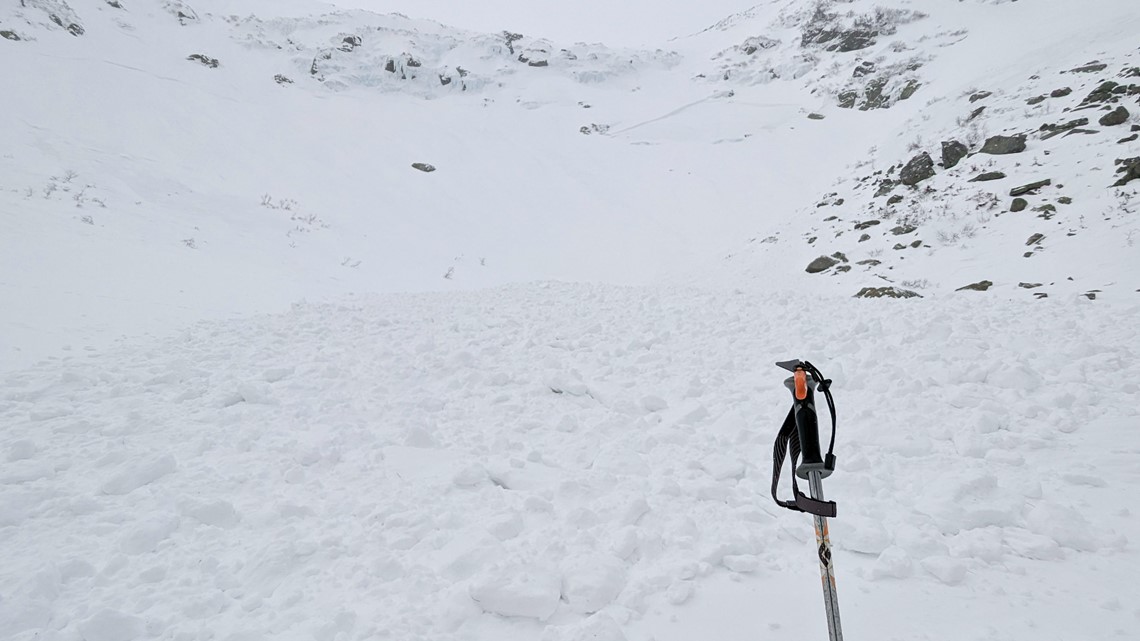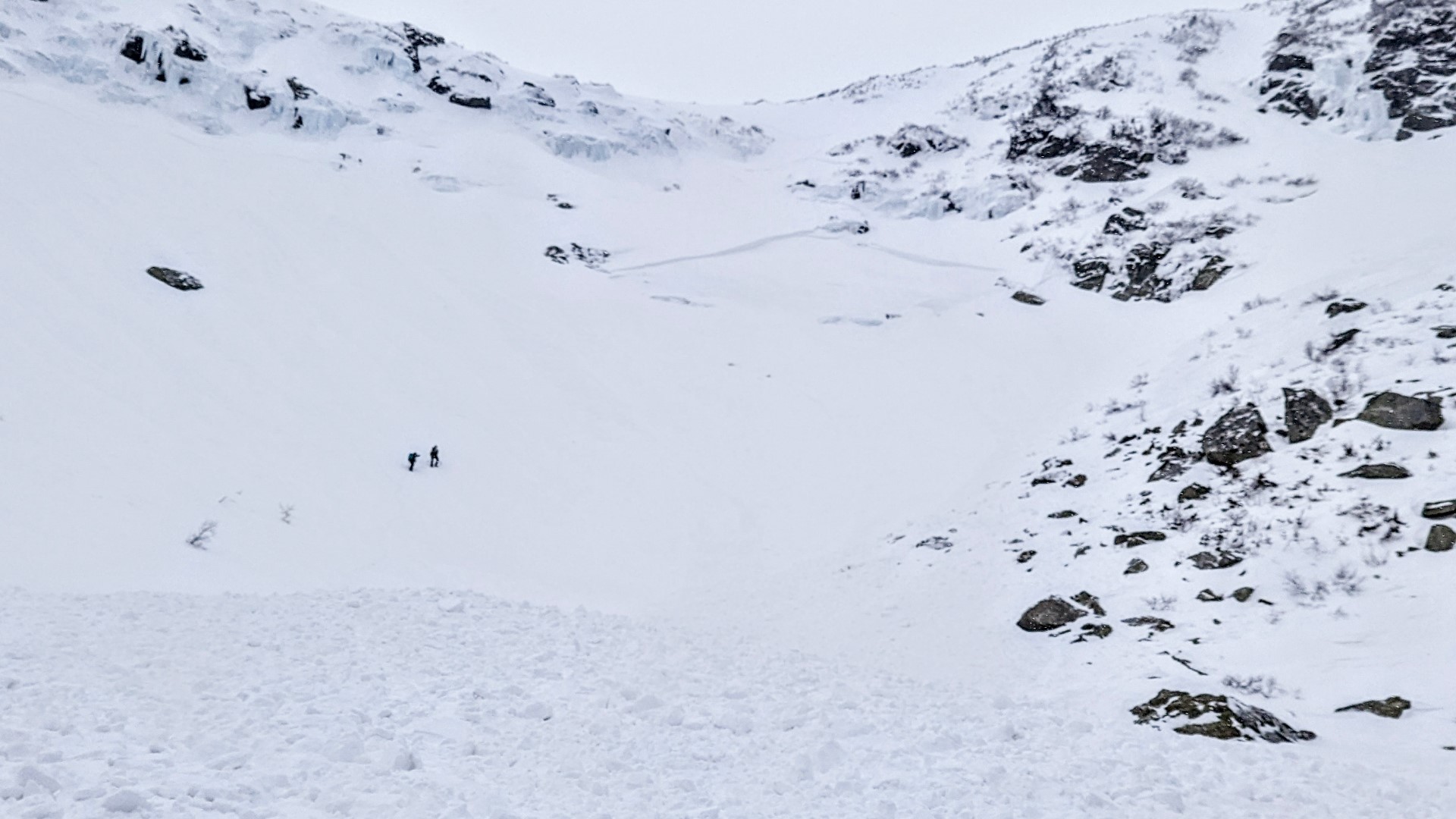NEW HAMPSHIRE, USA — A snowboarder on the southeast face of Mount Washington was fortunate to escape unscathed after getting caught in an avalanche Saturday morning.
The snowboarder was coming down Tuckerman's Ravine, a popular slope for backcountry skiers and snowboarders. The snowboarder was coming down the mountain with a skier, who watched the avalanche from above.
R.J. Phipps was out hiking with his wife that morning and caught the avalanche on video. He posted the video to a New Hampshire hiking Facebook group with the following:
"Saturday morning we decided to take our first winter trip up into the bowl of Tuckerman's Ravine to check out the backcountry skiers. With temps below zero and Mt Washington Avalanche center forecasting considerable chance of avalanches at that elevation and on eastern facing terrain, we were not sure what to expect. No matter, with this being a classic area for viewing as well as skiers, we were expecting something epic and were not disappointed. Within 5 minutes of arriving we captured a video of a snowboarder being swept off of the headwall into the rocks below. Incredibly they were only partially buried in the debris and able to self rescue."
“We weren’t in the bowl for maybe more than 30 seconds. ... We walked into the bowl, look up on the headwall, see the skier and snowboarder, and my wife’s like, ‘Are you getting this?’" Phipps told NEWS CENTER Maine. "So I pulled out my phone and started taping, and then it went off. So literally we were there for seconds.”
Phipps likened the sound of the avalanche to that of a rumbling freight train.
Jeff Fongemie, director of the Mount Washington Avalanche Center, wrote the avalanche forecast for Saturday. Avalanche forecasts are posted on the center's website daily. He forecasted a considerable hazard rating for avalanches on Saturday.
“Considerable is an important word in the world of avalanche hazard ratings," he explained. "North America uses a five-scale rating to classify the danger rating for avalanches. It goes low, moderate, considerable, high, and extreme. And on that day, we were considerable, which for skiers means that triggering an avalanche is likely on specific slopes -- the main slopes that we're aware of."
“It means it’s a risk. That day we had enough information to identify where the risk was. The greatest risk," Fongemie added. "So, on a considerable hazard rating, skiers can easily go out and recreate [and] have a good time, they just need to pick the correct slopes. They need to be aware of where they are and where they shouldn’t be.”
In Saturday's case, the snowboarder was able to rescue himself.
"Once he was down, you really couldn’t tell. He wasn’t making any noises or anything like that. And as we watched him start moving forward, I see him stand up, kind of brush himself off, and kind of throws his hands up in the air in jubilation I think," Phipps recalled. "And then the skier, his partner, comes down and they kind of check each other out.”
The Mount Washington Avalanche Center can be reached via 9-1-1, but Fongemie said it's best not to rely on search-and-rescue teams when skiing or snowboarding in the backcountry.
“Just because of the time factor. If a person is buried by the snow, you can imagine their mouth is packed with snow and they’re not breathing. So if you don’t get a buried person out of the snowpack pretty quick, the chance of them surviving is grim," he explained. "So, backcountry skiers tend to rely on self-rescue for that. They carry avalanche beacons and shovels. If the snowboarder were buried by that avalanche and he could not extricate himself, ideally his partner is going to pull out an avalanche beacon, search for where he is in the snowpack, and then dig him out. That would be the best solution if that were to happen.”


Fongemie said the threat of an avalanche is always present as long as there is snow on Mount Washington, adding the skier and snowboarder in the video could have been a little more careful choosing their terrain.
“Know the avalanche forecast and make careful terrain choices," he cautioned. "Backcountry skiing is a great sport that can be done safely and carefully, and I think that just means getting the information you need to have and making good choices.”
“Hopefully it’s a once-in-a-lifetime type of situation," Phipps said. "I’m super thankful that the snowboarder wasn’t hurt and that it didn’t turn into some sort of rescue situation. And I’m kind of in awe of the power of an avalanche."
To read the full report on Saturday's avalanche, click here.

